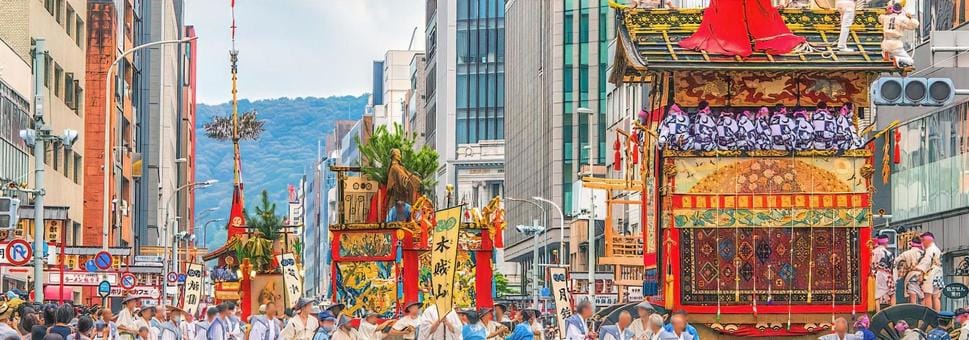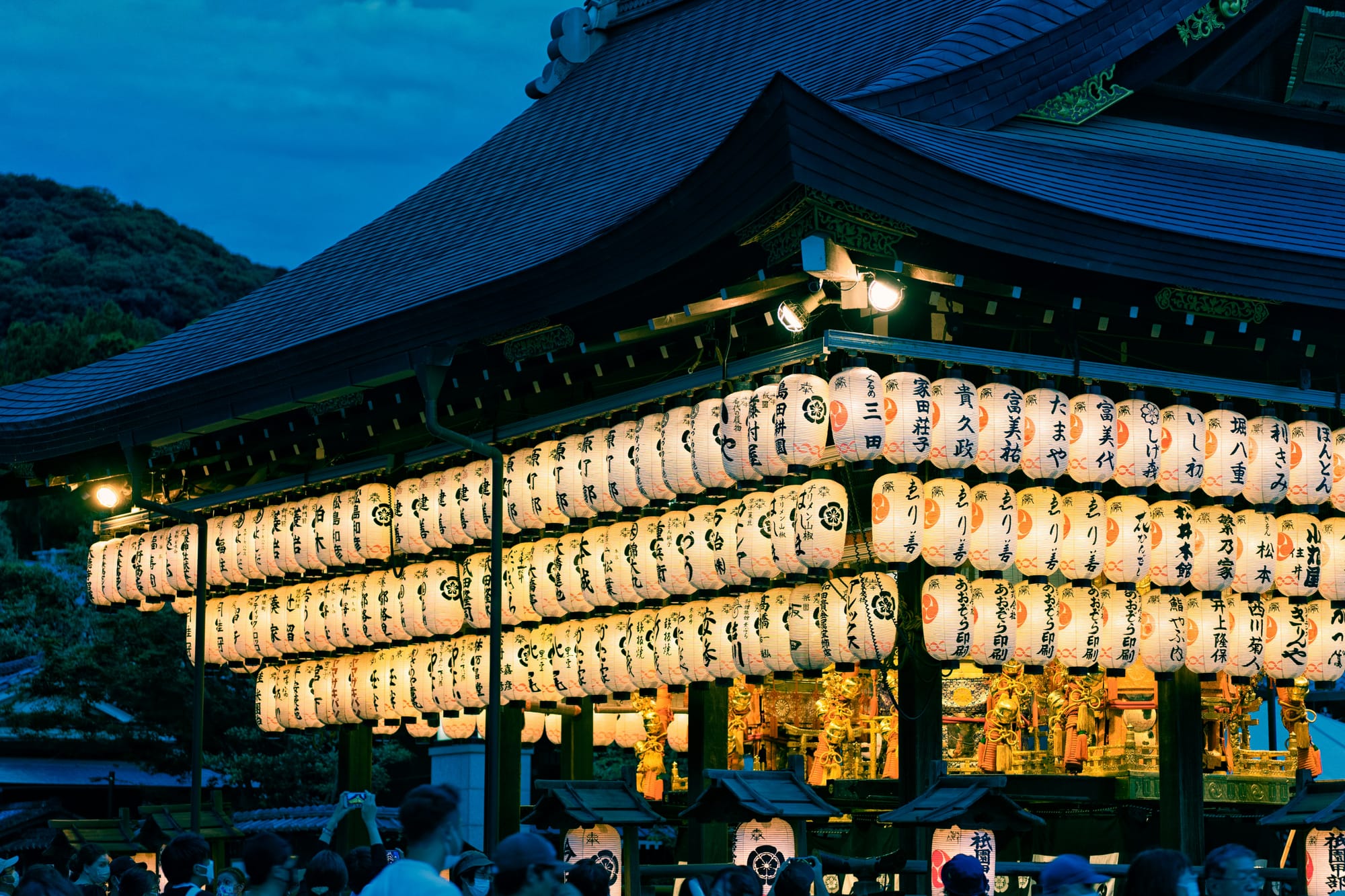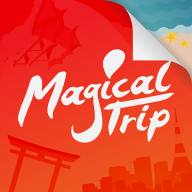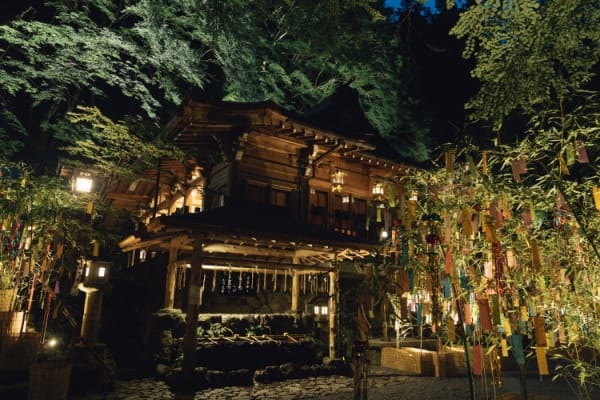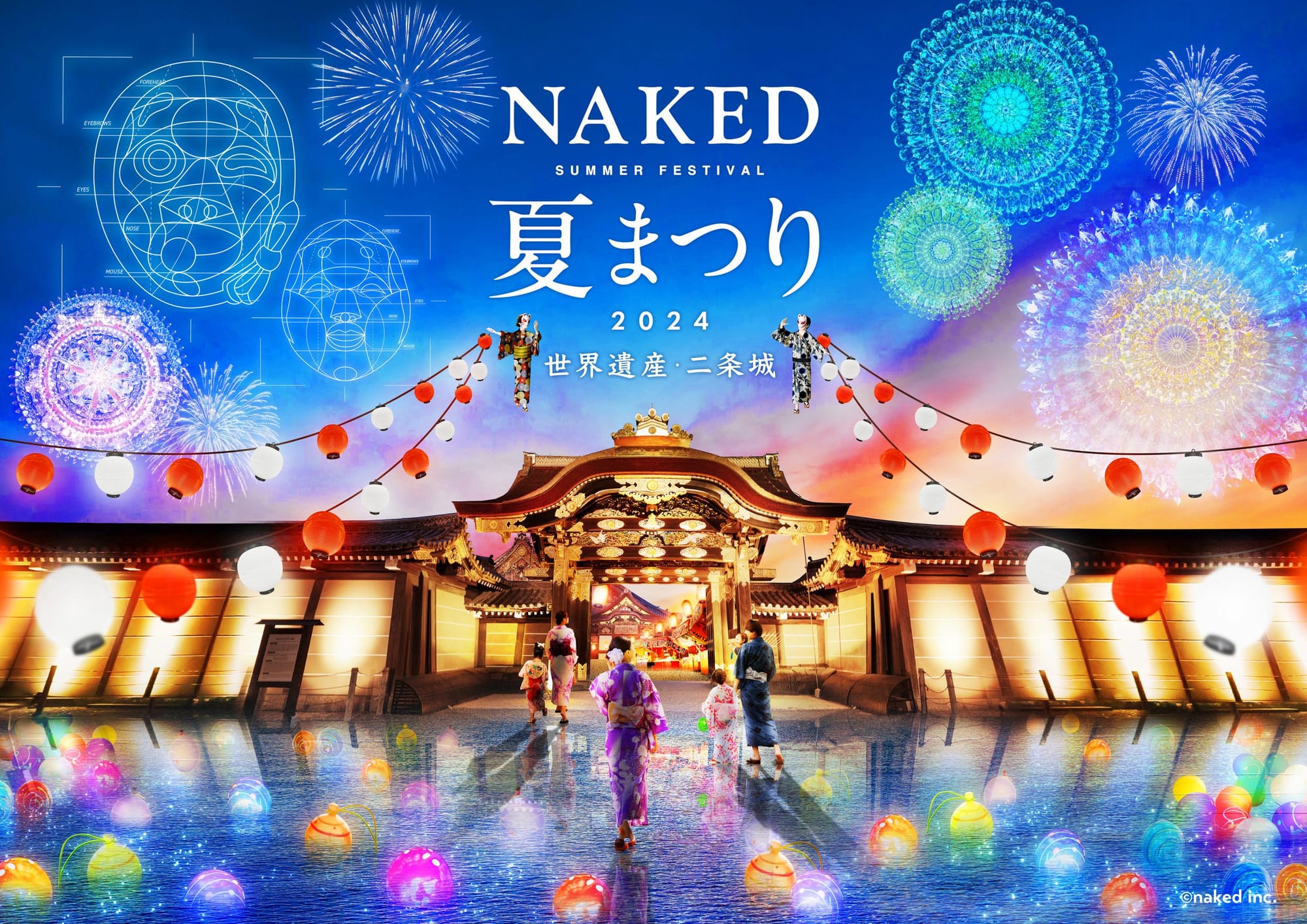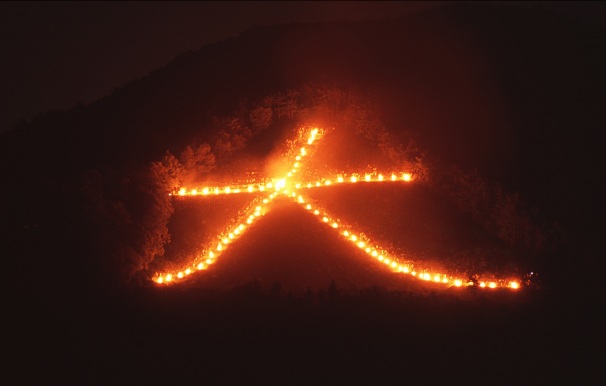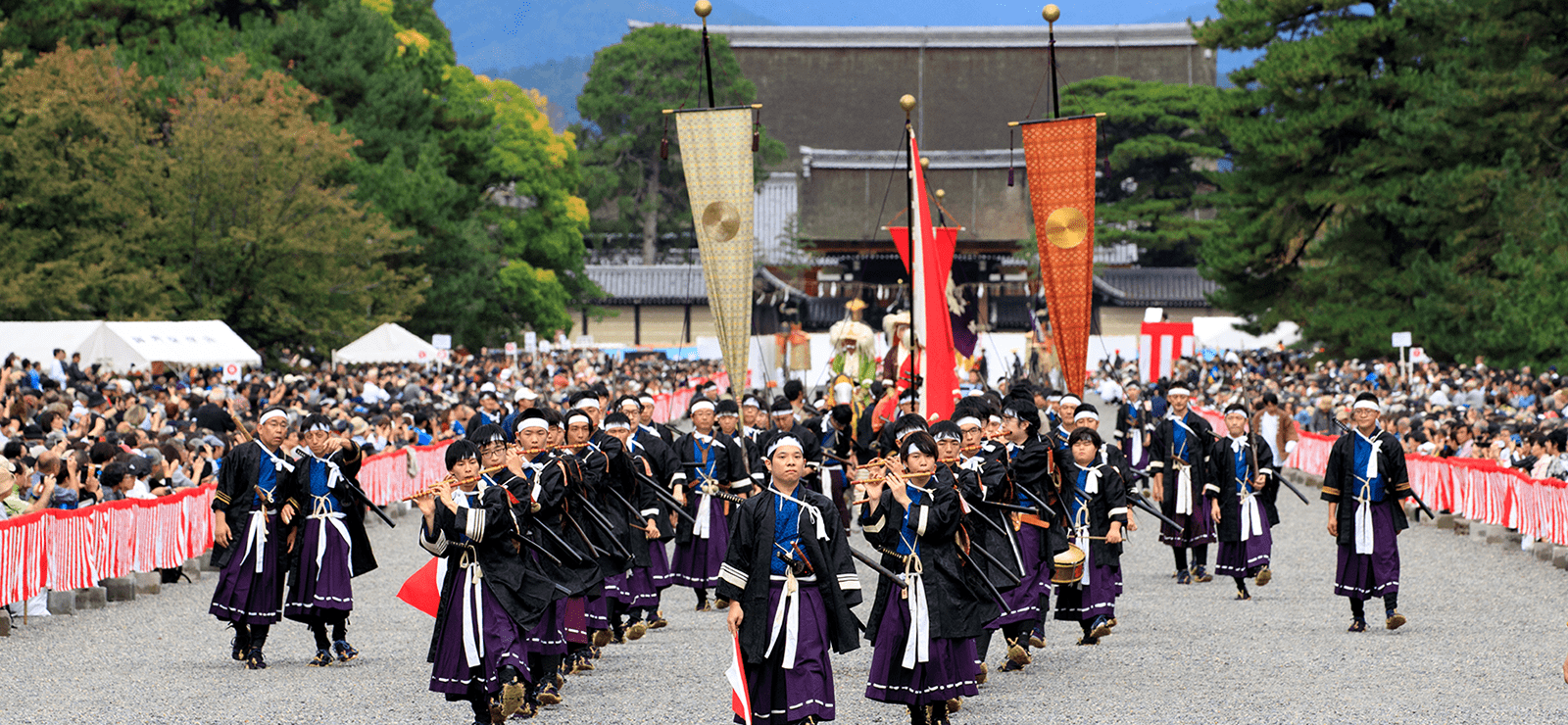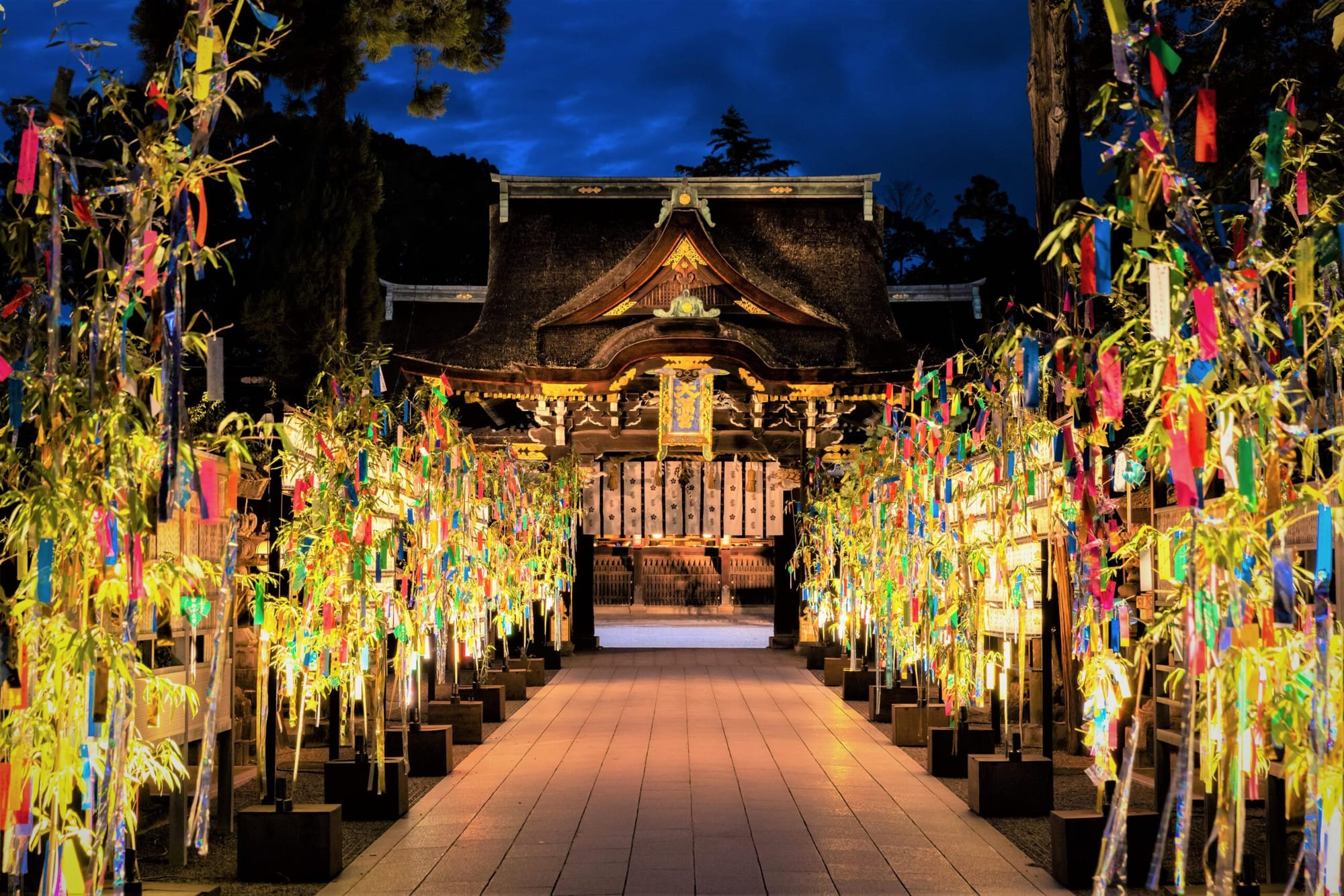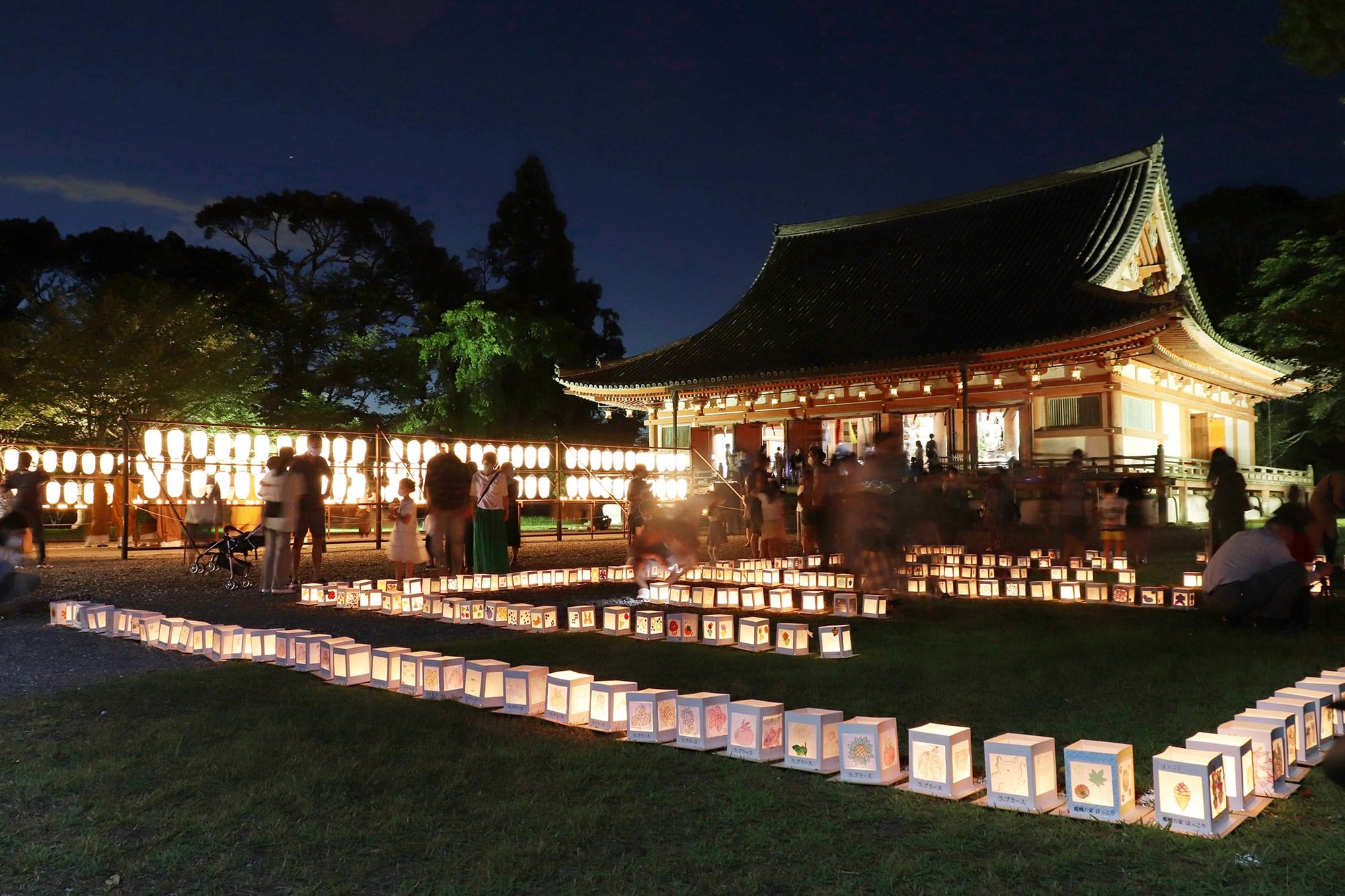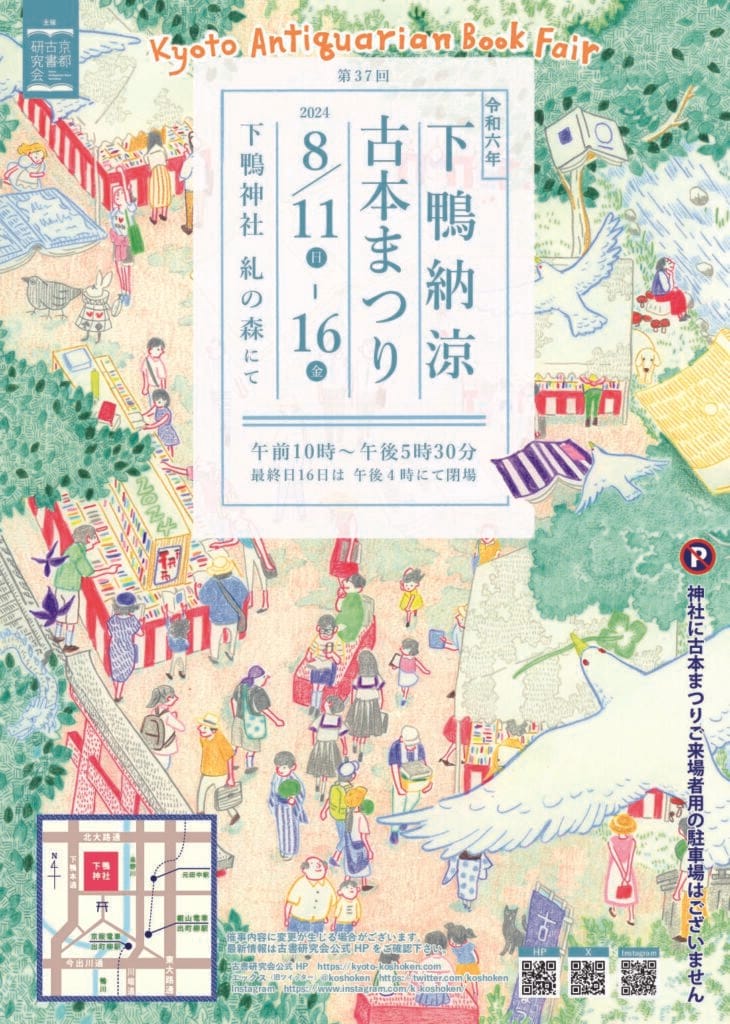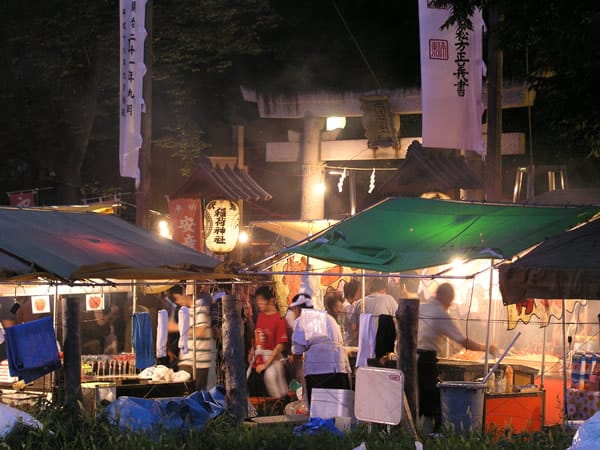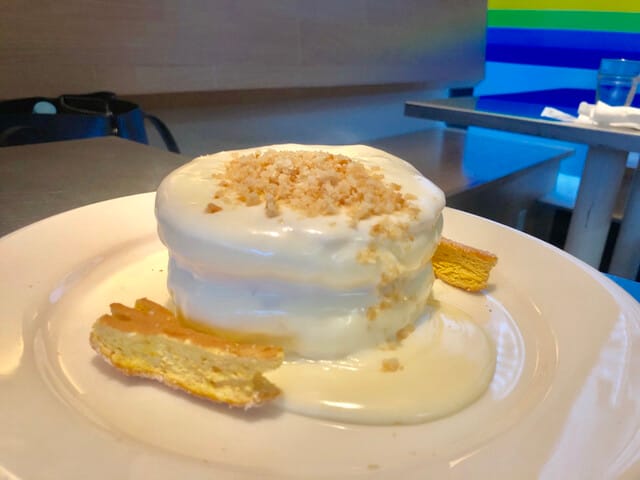Kyoto's 5 Most Spectacular Traditional Matsuri in 2026!
Kyoto, once the capital of Japan, is a city where politics and culture flourished. With over 1000 years of history, its temples and shrines have developed alongside numerous festivals.
Even today, festivals are held throughout the year, praying for stability in uncertain times and wishing for good harvests and health. For locals, Kyoto's history and unique festivals are a source of pride, and preserving them is considered a duty of Kyoto's people.
The diverse festivals, united and passed down through generations, continue to attract tourists to Kyoto.
July 2026 marks the peak of Kyoto's largest festival, the "Gion Matsuri." However, there are still many attractive festivals to come after July. This article will bring you carefully selected information about Kyoto's festivals from summer to autumn that you'll want to visit!
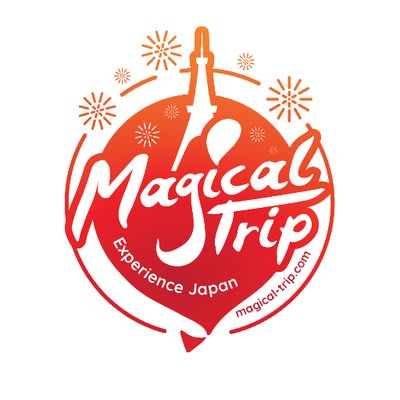

If you are looking for Comprehensive Kyoto Guide, check the article below! I summarized how and where you can enjoy different areas of Kyoto as much as possible.
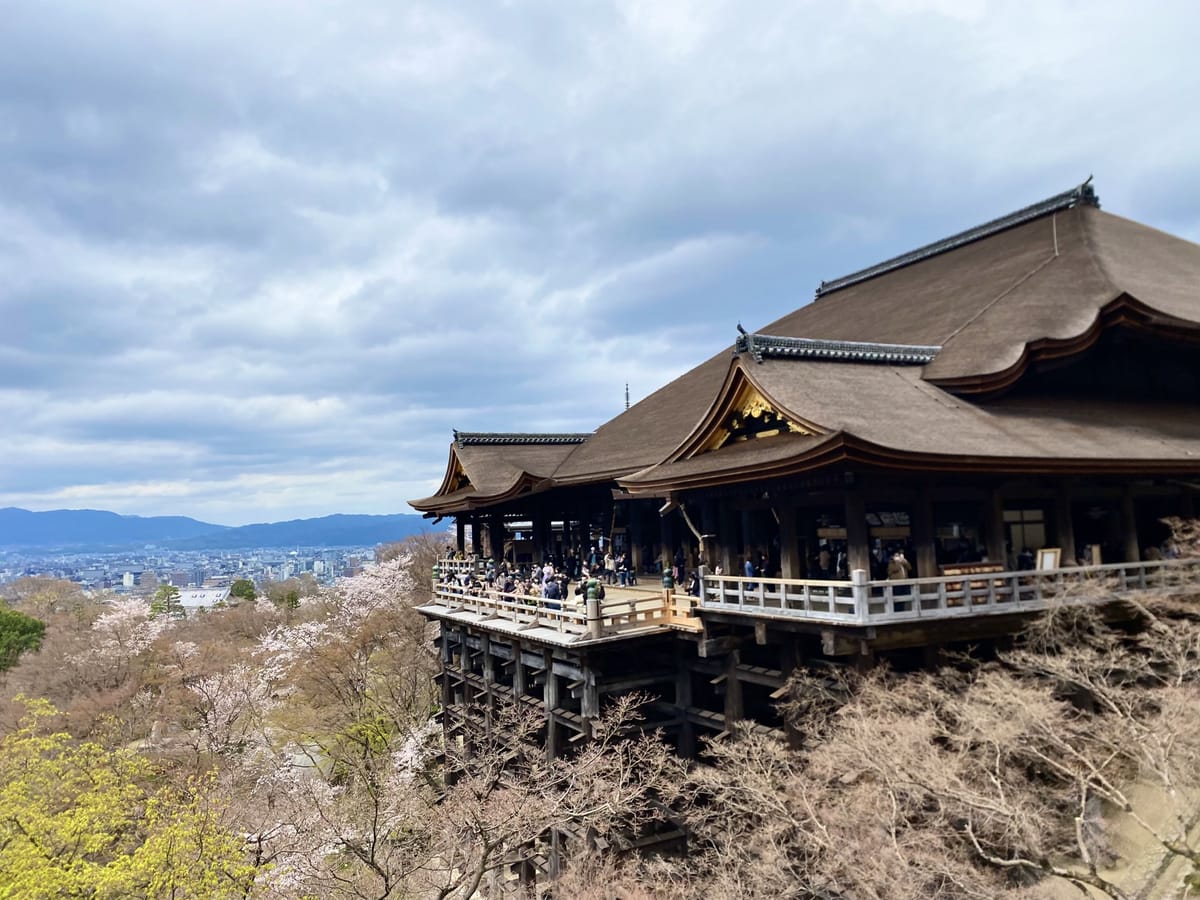
What is Kyoto's Largest Festival, the "Gion Matsuri"?
Source: Official Website
The "Gion Matsuri" is counted as one of Japan's three major festivals. The "Yamaboko Junko" procession, recognized as a UNESCO Intangible Cultural Heritage, is particularly famous and the festival's main highlight. Every year, it attracts many spectators from Japan and abroad who want to see the Yamaboko Junko. (Yamaboko = a type of float that is either pulled or carried during a festival in Japan.)
The origin of the Gion Matsuri is said to date back 1200 years when it was held to quell epidemics and calamities prevalent at the time. With Yasaka Shrine as the main venue, various events unfold throughout July.
The festival reaches its peak on July 17th with the Saki-matsuri (first part of the festival). Twenty-three elaborately decorated Yamaboko floats gather on the main street of Shijo-Kawaramachi. Each magnificent float, weighing 12 tons and standing 20 meters tall, is breathtakingly beautiful.
Accompanied by the distinctive "kon-chiki-chin" sound of the Gion-bayashi music, the floats gracefully parade through the main streets and back alleys. On July 24th, during the Ato-matsuri (latter part of the festival), you can see floats like the Ofune-hoko, beautifully adorned with textiles and embroidery.
On the day of the procession, spectators crowd the area to the point where it's difficult to move, so it's essential to observe proper etiquette. Avoid using parasols, umbrellas, or selfie sticks as they can be dangerous, and wear sneakers to prevent injuries.
Also, Kyoto in July is very humid, with daytime temperatures often reaching the high 30s (Celsius), so remember to stay hydrated and replenish your salt intake regularly. Enjoy the festival with proper preparation. If you missed this year's Gion Matsuri, start planning for next year!
<Main Venue Information>
- Address: 625 Gionmachi Kitagawa, Higashiyama-ku, Kyoto (Yasaka Shrine)
- Access: About 5 minutes walk from Gion-Shijo Station on the Keihan Main Line
About 8 minutes walk from Kyoto-Kawaramachi Station on the Hankyu Kyoto Line
Right at the Gion bus stop on Kyoto City Bus routes 100 & 206 from JR Kyoto Station
- Event Period: 7/1 - 7/31
- Phone: 075-561-6155 (Yasaka Shrine)
- Official Website: http://www.gionmatsuri.or.jp/
If you are interested in Gion Festival, check the article below! I summarized how and where you can enjoy Gion Festival as much as possible.


7 Traditional Festivals in Kyoto After July
Tanabata Bamboo Decoration Light-up / Kifune Shrine
Source: KYOTO SANGYO UNIVERSITY
Kifune Shrine, located in the deep mountainous area of northeastern Kyoto, is a popular tourist spot known for its cool and pleasant atmosphere even in summer and its spiritual ambiance.
The summer festival at Kifune Shrine is the "Tanabata Bamboo Decoration Light-up." From July 1st to August 15th, nighttime visits are possible from sunset until 8 PM.
This event is based on the Chinese Tanabata event "Kikkoden," held to pray for good harvests and improvement in arts and skills. Colorful “Tanzaku” (message cards) with wishes written on them are tied to bamboo decorations throughout the shrine grounds. While admiring the fantastical sight of bamboo decorations illuminated by gentle lights, why not hang your own “Tanzaku” with a wish?
The bamboo decoration light-up is only at the main shrine, so it's recommended to arrive before sunset to explore the Okumiya (inner shrine) and Yuinoyashiro. As the sun sets, a faint light illuminates the Okumiya and Yuinoyashiro, enveloping them in an even more mystical atmosphere. This is my favorite time.
The lush green maple leaves are refreshing, making it an ideal spot to escape the summer heat. It's also wonderfully atmospheric to enjoy the natural coolness away from the humid city center.
<Venue Information>
- Address: 180 Kurama Kibune-cho, Sakyo-ku, Kyoto
- Access: 4-minute walk from "Kibune" bus stop on Kyoto City Bus route 33 from Kibuneguchi Station on the Eizan Kurama Line
- Phone: 075-741-2016
- Event Period: 7/1 - 8/15
- Visiting Hours: Sunset - 20:00
- Official Website: https://kifunejinja.jp/
If you are interested in Kifune area, check the article below! I summarized in more details and how I felt there.
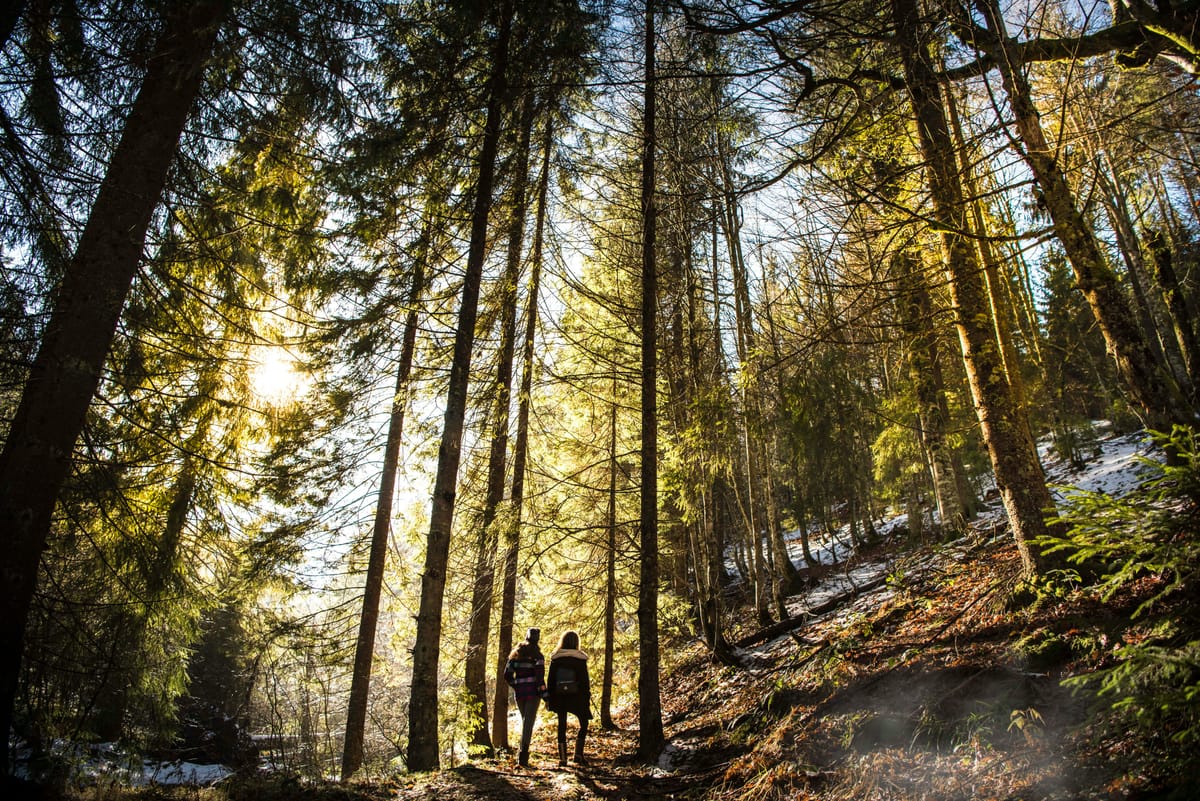
NAKED Summer Festival 2026 World Heritage Site - Nijo Castle / Nijo Castle
Source: Official website
"NAKED Summer Festival 2026 World Heritage Site - Nijo Castle" is a next-generation summer festival using digital art. The special light-up at Nijo Castle, produced by "NAKED, INC.," which handles creative events both domestically and internationally, started in 2018 and has continued without interruption even during the COVID-19 pandemic.
The summer festival, in particular, has become a regular summer event loved by Kyoto citizens. This year, it will be held from July 22nd to August 21st. The charm of this summer festival lies in its interactive enjoyment, with both real and metaverse Nijo Castle as stages.
This year's most anticipated event is the participatory projection mapping fireworks display. By logging into the metaverse Nijo Castle from your smartphone's web browser, you can create your own virtual fireworks. These fireworks will then appear as projection mapping on the actual stone walls of Nijo Castle, promising an exciting and surprising experience.
The beautiful light-up of historical buildings and gardens is also impressive. There will also be many food stalls and traditional Japanese games like bouncy ball scooping and yo-yo fishing. The content is rich enough for both adults and children to thoroughly enjoy.
<Venue Information>
- Address: 541 Nijojo-cho, Horikawa-nishi iru, Nijo-dori, Nakagyo-ku, Kyoto
- Access: Right at Nijojo-mae Station on the Tozai Subway Line
Right at Nijojo-mae bus stop on Kyoto City Bus routes 9 & 50 & 110 from JR Kyoto Station
Right at Nijojo-mae bus stop on Kyoto City Bus routes 12 & 46 & 32 from Kyoto-Kawaramachi Station on the Hankyu Kyoto Line
- Phone: 050-1750-3979
- Event Period: 7/22 - 8/21
- Opening Hours: 18:30 - 22:00 (Last entry at 21:20)
- Admission: Monday-Thursday / Adults (13 and over) 1800 yen, Elementary school students (up to 12) 1000 yen, Friday-Saturday-Holidays / Adults (13 and over) 2200 yen, Elementary school students (up to 12) 1400 yen
- Official Website: https://event.naked.works/nijojo/summer/ja/
If you are interested in Nijo Castle, check the article below! I summarized in more details and how I felt there.
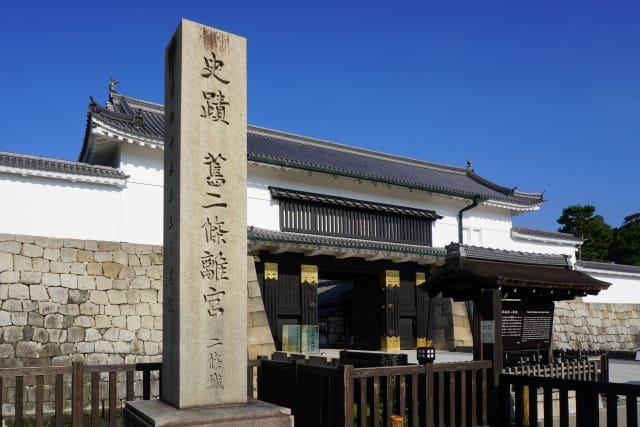
Kyoto Gozan Okuribi / Various locations in Kyoto
Source: Official Website
The "Kyoto Gozan Okuribi" is widely known as a traditional summer event in Kyoto, alongside the Gion Matsuri. The most famous is the "Daimonji Okuribi," which appears on Mt. Nyoigatake, directly east of the Kyoto Imperial Palace where imperial enthronement ceremonies were once held.
At 8 PM on August 16th, the lighting starts with Daimonji, followed by four other locations lit at 5-minute intervals. To the northeast in the Matsugasaki area, the character for "Myoho'' is lit, then a boat shape (Funagata) in the Nishigamo area, followed by the "Hidari Daimonji" in the Okitayama area, and finally a torii gate shape (Torii-gata) in the Saga area.
Originally, Okuribi was a custom to send off the spirits of ancestors who had returned to their earthly families during the Obon period (a Buddhist event to honor ancestors' spirits) from August 13th to 16th. In modern Japan, Obon practices have been simplified, making Kyoto's Gozan Okuribi a precious experience of traditional Japanese customs.
As you watch the solemn and beautiful Okuribi appear on Kyoto's mountains, you'll likely feel filled with gratitude for your beloved family. In Japan, it's considered that summer ends and autumn begins after Obon. Experience the arrival of autumn in Japan along with Kyoto's Gozan Okuribi.
<Event Information>
- Viewing Location: Kyoto city area, centered around Kyoto Imperial Palace
- Event Date: 8/16 20:00 - around 20:50
- Official Website: https://www.gozan-okuribi.com/2022/ja/top.html
Jidai Matsuri
Source: Kyoto Travel Navi
The "Jidai Matsuri" is truly a parade that traces Japanese history! It's a festival of Heian Shrine held annually on October 22nd.
The historical costume procession, showcasing the changes in Japanese history and culture from the 700s to the late 1800s, is a must-see event even for those who aren't history enthusiasts. About 2,000 Kyoto citizens dress up as nobles, politicians, military commanders, famous figures, and commoners from various eras that shaped Japanese history.
With ox carts and horse-drawn carriages added, the sight of the procession moving from Kyoto Imperial Palace to Heian Shrine is simply magnificent!
Important figures in Japanese history, such as Sakamoto Ryoma, who greatly contributed to Japan's political development, and Oda Nobunaga, a military commander from the Warring States period, appear one after another, creating a luxurious lineup of Japan's historical top stars.
The 12,000 furnishings, costumes, and ritual implements are meticulously reproduced using traditional craft techniques. Their intricate craftsmanship and gorgeous attire are captivating. Since the procession lasts about 3 hours, it's recommended to reserve paid seats if you want to watch at leisure. Here too, the use of parasols, umbrellas, and tripods is prohibited, so try to dress lightly for viewing.
<Main Venue>
- Address: 97 Okazaki Nishitenno-cho, Sakyo-ku, Kyoto (Heian Shrine)
- Access: 5-minute walk from Okazaki Koen Bijutsukan/Heianjingu-mae bus stop on Kyoto City Bus routes 5 & 100 & 110 from JR Kyoto Station
10-minute walk from Exit 1 of Higashiyama Station on the Tozai Subway Line
5-minute walk from Okazaki Koen Bijutsukan/Heianjingu-mae bus stop on Kyoto City Bus routes 5 & 46 & 32 from Kyoto-Kawaramachi Station on the Hankyu Kyoto Line
- Phone: 075-761-0221
- Event Date: 10/22 7:00 - 16:00
- Official Website: https://www.heianjingu.or.jp/festival/jidaisai.html
Kitano Festival Tanabata Ritual / Kitano Tenmangu Shrine
Source: Kyo No Tanabata
Kitano Tenmangu Shrine enshrines the deity of learning, culture, and arts. It's a shrine with a noble and long history, and I personally visited it during my student days to pray for success in entrance exams.
The summer festival held here from August 2nd to 18th also has its origins in the Tanabata event. It's a popular ritual among locals to pray for good harvests and good health. The spacious shrine grounds are decorated with Tanabata bamboo, and the light-up creates an even more fantastical atmosphere.
During the same period, the "Ashitsuke Tomyo Shinji" (foot-soaking lantern ritual) is also held at the Mitarashi River in the shrine grounds (separate fee). This involves putting your feet in the shrine's clear water to purify yourself of impurities and evil spirits, then lighting a candle and offering it with your wishes. As you soak your feet in the pure water, you'll feel the heat subside and your mind becomes calm and peaceful.
Also, check out the carvings on the "Sanko-mon" gate leading to the main hall. It's said to have carvings of the sun, moon, and stars, but in reality, there's no star motif. According to an old legend, the North Star shone right above this gate, hence it's called "the legendary gate crowned by the North Star." Looking up at Kyoto's summer night sky from this gate is truly special.
On the day of the festival, there's also a special opening (separate fee) of the "Ishi no Ma" in the National Treasure main hall, usually only accessible to Shinto priests. Don't miss this opportunity to pass through as a general worshipper.
<Venue Information>
- Address: Bakuro-cho, Kamigyo-ku, Kyoto
- Access: Right at Kitano Tenmangu-mae bus stop on Kyoto City Bus route 50 from JR Kyoto Station
Right at Kitano Tenmangu-mae bus stop on Kyoto City Bus route 55 from Omiya Station on the Hankyu Kyoto Line
Right at Kitano Tenmangu-mae bus stop on Kyoto City Bus route 55 from Sanjo Station on the Keihan Main Line
- Phone: 075-461-0005
- Event Period: 8/2 - 8/18
- Event Hours: 9:00 - 20:00 (Last entry 19:40)
- Official Website: https://kitanotenmangu.or.jp/
Daigoji Temple Manto-e / Daigoji Temple
Source: Official Website
Daigoji Temple, with over 1100 years of history, is registered as a UNESCO World Heritage site. The Manto-e held here on the night of August 5th every year is a Buddhist service to honor ancestors and spirits, and to offer prayers of gratitude for all life.
Manto-e is a Buddhist event held at many Buddhist temples in summer. As the name suggests (Manto means "ten thousand lights"), many lanterns are displayed, creating a fantastical and beautiful sight that attracts many tourists to various temples in Kyoto.
At Daigoji, as the sun sets, placed lanterns and paper lanterns along the approach are lit, filling the area with a gentle light. The National Treasure Kondo (main hall) and five-story pagoda are also illuminated, blending with the light from the lanterns to create an increasingly ethereal appearance.
Take a moment to pray for peace while contemplating unseen lives and distant unknown worlds. Cherish this modest time of reflection amidst your sightseeing. This is the moment that Kyoto's people treasure.
Since you've come all the way to Daigoji, I recommend also viewing the Sanpoin Garden, designated as a Special Historic Site of Japan. You can enjoy a quiet moment surrounded by timeless tranquility.
<Venue Information>
- Address: 22 Daigohigashi Ojicho, Fushimi-ku, Kyoto
- Access: 10-minute walk from Daigo Station on the Tozai Subway Line, or right at Daigoji Temple stop on the Keihan Bus Kyoto Daigoji Line from Kyoto Station Hachijo Exit
- Phone: 075-571-0002
- Event Date: 8/5 18:00 - 20:30
- Official Website: https://www.daigoji.or.jp/
Shimogamo Noryo Furuhon Matsuri / Shimogamo Shrine - Tadasu no Mori (Kyoto)
Source: Official Website
Lastly, let's introduce a book event for a change of pace. The "Shimogamo Noryo Furuhon Matsuri" is a popular used book fair held annually in the Tadasu no Mori, within the World Heritage site of Shimogamo Shrine.
This event was started by the "Kyoto Antiquarian Booksellers Research Society" as an activity to convey the charm of old books. As you walk through Kyoto, you'll notice many antiquarian bookstores, indicating how book culture has developed in the city. This year marks the 37th edition, held from August 11th to 16th. About 30 antiquarian bookstores, mainly from the Kansai area (centered on Kyoto, Osaka, Hyogo, and Mie prefectures), will set up shop.
Approximately 800,000 used books will be on display, ranging from paperbacks and magazines to academic and art books, antique books from the 1800s, and even movie pamphlets, posters, and picture books. You might find unexpected treasures like rare one-of-a-kind items or beautifully bound, artistic, and valuable books! It's also a great place to look for unique souvenirs.
It's a luxurious experience to leisurely browse through your chosen books in the precious Tadasu no Mori, which preserves the same vegetation as the primeval forest from around the 3rd century BC.
<Venue Information>
- Address: 59 Shimogamo Izumigawa-cho, Sakyo-ku, Kyoto
- Access: Get off at "Shimogamo Jinja-mae" or "Tadasu no Mori" bus stop on Kyoto City Bus routes 4 & 205 from JR Kyoto Station
Get off at "Shimogamo Jinja-mae" or "Tadasu no Mori" bus stop on Kyoto City Bus routes 1 & 205 from Kitaoji Station on the Karasuma Subway Line
12-minute walk from Demachiyanagi Station on the Keihan Main Line
- Phone: 075-712-9664 (Hagi Shobo)
- Event Period: 8/11 - 16, 10:00 - 17:30 (Until 16:00 on the last day)
- Official Website: https://kyoto-koshoken.com/
Summary
We've introduced a variety of festivals unique to Kyoto, a city with a long history and many venerable temples and shrines. By deepening your understanding of the meanings and backgrounds behind each festival, you can enjoy and engage with them more profoundly, leading to more valuable experiences.
August, in particular, coincides with the traditional Japanese Obon season for ancestral veneration, so many festivals are held with prayers for peace and thoughts of consoling spirits. Please thoroughly enjoy these seasonal festivals that can only be experienced in Kyoto.
If you are interested in summer in Kyoto, check the article below! I summarized how and where you can enjoy summer in Kyoto as much as possible.
